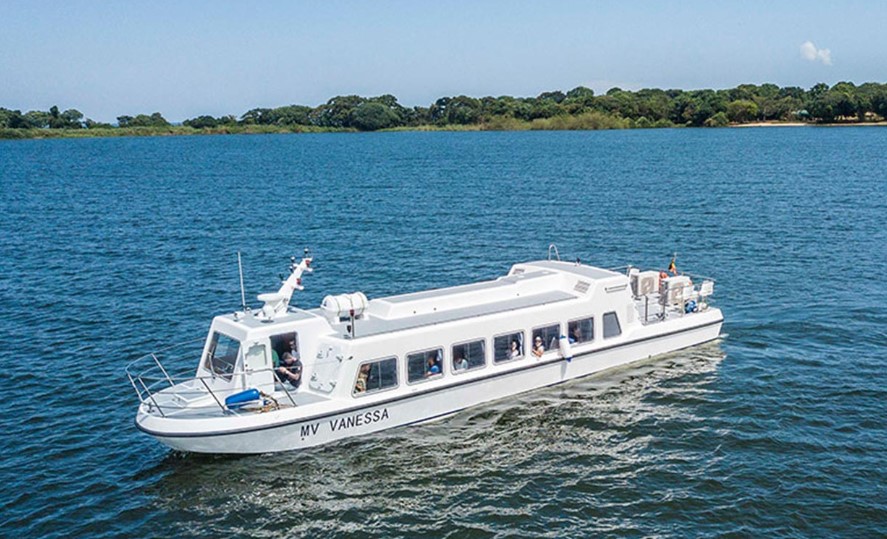Tourist Transportation in Uganda: A Journey Through Diverse Means – From the lush greenery of its National Parks to the mesmerizing waters of Lake Victoria, Uganda offers a plethora of attractions for tourists to explore. To fully enjoy the country’s riches, tourists rely on a variety of transportation means.
In this article, we will delve into the different modes of transport that cater to the needs of tourists in Uganda, highlighting their advantages, challenges, and impact on the tourism industry.
Road Transport
Road transport is the most common means of travel for tourists in Uganda. The country boasts an extensive road network that connects major cities, towns, and tourist destinations. Here are some key aspects of road transport for tourists:
Self-Driving
Many tourists prefer renting vehicles to explore Uganda independently. This option offers flexibility and the freedom to set one’s itinerary. However, it also comes with challenges such as unfamiliar road conditions, navigation, and adherence to traffic rules.
Tourist Buses
Tourist buses are a popular choice for group travelers. They provide comfort, safety, and knowledgeable guides who share insights about the country’s attractions. These buses typically follow set routes, making them convenient for those who prefer a guided experience.
Matatus and Boda Bodas
For budget-conscious travelers, matatus (shared minivans) and boda bodas (motorcycle taxis) offer affordable transportation within cities and towns. While they are convenient, tourists should exercise caution when using these modes, especially with safety concerns and unfamiliarity with local routes.
Air Transport
Uganda has several domestic airports and airstrips that cater to tourists who want to reach remote or distant destinations quickly. Here are some notable aspects of air transport for tourists:
Charter Flights
Charter flights are popular for tourists seeking to reach remote national parks like Bwindi Impenetrable Forest or Kidepo Valley National Park. These flights provide breathtaking aerial views and reduce travel time, but they can be expensive.
Scheduled Domestic Flights
Domestic airlines like Uganda Airlines offer scheduled flights between major cities like Entebbe, Kampala, and regional hubs. This option is more affordable than charters and provides convenience for tourists with limited time.
Helicopter Tours
Some tour operators offer helicopter tours, providing tourists with a unique perspective of Uganda’s landscapes. These tours are often exclusive and provide a luxurious experience.
Water Transport
Uganda’s abundant water bodies offer tourists a unique way to explore the country’s natural beauty and culture. Key aspects of water transport for tourists include:
Ferries
Lake Victoria, the largest freshwater lake in Africa, is traversed by various ferries that connect islands and lakeside towns. Tourists can enjoy scenic rides while witnessing local life along the shores.
Canoe Safaris
Exploring Uganda’s waterways by canoe is a captivating experience, especially in destinations like Queen Elizabeth National Park. Tourists can observe wildlife from a close but safe distance and enjoy serene surroundings.
Cruise Ships
Nile River cruises provide an unforgettable journey through the heart of Uganda. Tourists can explore Murchison Falls, see wildlife, and appreciate the historical significance of the Nile.
Rail Transport
Rail transport is less commonly used by tourists in Uganda, but it still plays a role in the transportation landscape:
Uganda Railway
The Uganda Railways Corporation operates passenger trains connecting major cities like Kampala, Jinja, and Kasese. While not a primary choice for tourists, it offers a unique travel experience with a glimpse into the country’s railway history.
Challenges and Opportunities
While Uganda offers diverse means of transportation for tourists, there are several challenges and opportunities to consider:
Infrastructure
Road conditions in some areas may be challenging, requiring maintenance and improvements to ensure safe travel. Investment in infrastructure can enhance the overall tourist experience.
Safety
Safety concerns, especially with matatus and boda bodas, need to be addressed through regulation and awareness campaigns to ensure tourists’ well-being.
Sustainability
Sustainable transportation options such as electric buses and boats powered by renewable energy sources can contribute to reducing the environmental impact of tourism.
Connectivity
Enhancing connectivity between different modes of transport and improving information dissemination to tourists can streamline travel and boost tourism.
Conclusion
Transportation means for tourists in Uganda are as diverse as the country’s attractions. From road trips that offer flexibility to air travel that saves time, and water transport that provides unique perspectives, Uganda caters to a wide range of traveler preferences.
While challenges like infrastructure and safety exist, Uganda’s commitment to improving its transportation options promises an even more enriching and accessible experience for tourists in the future. As the “Pearl of Africa” continues to shine, its transport means for tourists will play a crucial role in facilitating unforgettable journeys through its breathtaking landscapes and vibrant culture.




Comment (0)